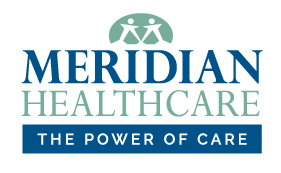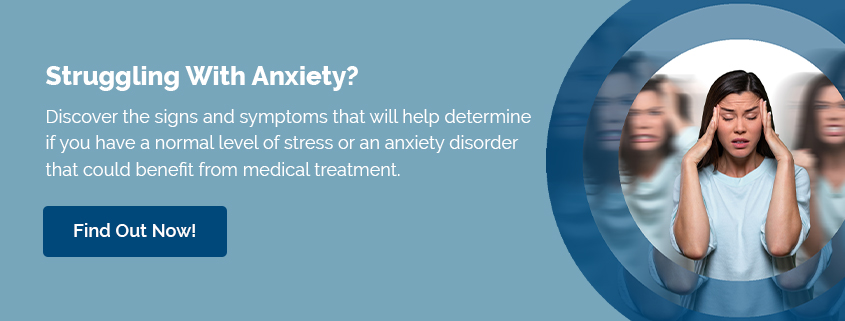What Are the Symptoms and Causes of Post-Traumatic Stress Disorder (PTSD)?
Have you experienced an extremely stressful or traumatic event that changed your life?
Post-traumatic stress disorder or PTSD is a serious condition. It occurs when individuals experience or witness a traumatic event and are overwhelmed with feelings of distress and anxiety that stay with them long past the event itself. In this blog, we will address some symptoms and causes of post-traumatic stress disorder (PTSD).
*If you feel like you might have PTSD or any other mental health disorder, do not self-diagnose. Instead, reach out to a mental health professional.
What Is PTSD?
Post-traumatic stress disorder (PTSD) is an anxiety disorder developed after someone experiences a traumatic event. Anyone who has gone through a traumatic event can develop PTSD, but it is commonly associated with military veterans returning from service, victims of sexual assault or physical abuse, terrorist attack survivors, and those who were in a life-threatening car accident. It can happen at any time in someone’s life.
How Common Is PTSD?
PTSD is a fairly common mental health problem. According to the National Center for PTSD, nearly eight out of every 100 people will experience PTSD within their lifetime. It affects twice as many women as men, but it can affect anyone of any demographic, including children and adolescents.
A staggering 12 million adults in the United States have PTSD in any given year. As with any mental health disorder, genetics play a huge role in the likelihood of developing PTSD.
Types of PTSD
There is no one way to experience PTSD. Two people can experience the same event and have two very different emotional and mental responses. Similarly, not all traumatic events are the same.
PTSD can be caused by highly traumatic singular events, multiple occurrences of the same or similar incidents, or long-lasting events. Because of this diversity in experiences, there are multiple types of PTSD.
Normal Stress Response
Everyone will experience stress and fear throughout their lifetime. Events that cause a normal stress response do not lead to PTSD (these types of “normal” stressful events trigger a person’s fight or flight response). Normal stress symptoms typically subside within a few weeks with the support of family members, group therapy, increased focus on positive emotions, or other types of social support.
Acute Stress Disorder
Acute stress disorder can lead to PTSD if left untreated. This develops in those who have witnessed a life-threatening event. Acute stress disorder can be treated before it worsens by talk therapy, group therapy, medication, and other treatment options prescribed by a psychiatrist.
Dissociative PTSD
Dissociative PTSD was added to the DSM-5 (Diagnostic and Statistical Manual of Mental Disorders) in 2013. Those with this type of PTSD typically have another co-occurring mental health condition.
These individuals can experience dissociative flashbacks or dissociative amnesia, where they block the traumatic experience from their memory. While research is still being conducted, effective treatment may include cognitive processing therapy (CPT), prolonged exposure (PE), eye movement desensitization and reprocessing (EMDR), and narrative exposure therapy (NET).
Uncomplicated PTSD
Uncomplicated PTSD has similar symptoms to other types of PTSD, such as re-experiencing the trauma and avoiding triggers. It is the most commonly diagnosed type — with a high number of people who received effective treatment.
Complex PTSD
Complex PTSD develops after a person has experienced trauma over months or years. Chronic trauma can affect anyone, from children to adulthood. This continued exposure to trauma can make it difficult for the individual to create relationships. Complex PTSD can present itself through physical symptoms, as well, including chronic pain and fatigue.
The amount of those with complex PTSD is expected to increase as a response to the COVID-19 global pandemic, since this collective experience has caused constant stress on people throughout the world.
Co-Morbid PTSD
Those with co-morbid PTSD also have other mental illnesses and conditions. It is commonly associated with anxiety disorders, panic disorders, major depressive disorder, and substance abuse disorder. Co-morbid PTSD treatment addresses the symptoms of both PTSD and the other co-occurring disorders.
PTSD Risk Factors
Post-traumatic stress disorder (PTSD) can be caused by experiencing or witnessing a traumatic event that causes intense fear and terror.
As with any mental disorder, genetics play a huge role in how much an experience or event will affect a person. These events are classified differently as well, as either a “Big T” or “Little t” trauma.
Big T traumas are life-threatening or disturbing situations most commonly associated with PTSD. These extreme events typically include natural disasters, war, domestic violence, terrorist attacks, and even the death of a parent.
Little t traumas can have a significant effect on a person, even though they do not spark from a singular, extreme event. Any ongoing situation that creates fear, distress, and helplessness is a Little t trauma. These traumas include non-life-threatening injuries, emotional abuse, the death of a pet or loved one, bullying, and harassment, among others.
Little t traumas may not necessarily be life-threatening to the individual, but can still manifest themselves into the same physical symptoms associated with Big T traumas. Both types of trauma can lead to other mental health conditions like anxiety, depression, substance abuse, eating disorders, and other behavioral issues.
What Are the Symptoms of PTSD?
PTSD symptoms may not appear until months (or years) after the traumatic experience. While most people begin to experience symptoms within three months, it can take much longer than that.
For a diagnosis of PTSD, symptoms must be present for longer than a month and interfere with daily life and relationships. These symptoms must also be independent of medication, substance use, or other illnesses.
According to the National Institute of Mental Health (NIMH), the following are common symptoms of post-traumatic stress disorder:
- Flashbacks reliving the traumatic event
- Recurring and intrusive memories
- Distressing or negative thoughts
- Physical signs of stress
- Avoiding reminders of the traumatic event
- Being easily startled and having high reactivity
- Difficulty concentrating
- Sleep problems
- Irritability with aggressive or angry outbursts
- Risky or self-destructive behavior
- Trouble remembering or distorted memories of the experience
What If You Feel These Symptoms?
If you have experienced a traumatic event and believe you experience symptoms of PTSD, do not self-diagnose, but instead, seek help from a professional. Treatment often includes psychotherapy, either individually or with a support group of those who had similar experiences.
In addition to professional help, self-care practices can provide relief from stress symptoms and promote mental and physical health. Avoid alcohol or drugs if they exacerbate your symptoms or if your doctor has advised against them. Do not take any medication without a prescription, as some antidepressants may have negative effects.
There’s Hope for Managing PTSD
If you are suffering from PTSD, help is out there. Learning the symptoms and causes of post-traumatic stress disorder (PTSD) is the first step.
People live with PTSD every day and millions recover with effective treatment. At Meridian HealthCare, we can work through trauma with you and help alleviate those symptoms. We are here for you; call us today to find the support you’ve been looking for.
*If this is an emergency, please call 911 or the suicide helpline at 1-800-273-8255.






